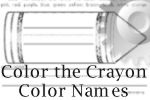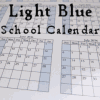Conducting a Spelling Class
A long time ago, a teacher gave me some old school books, one was an old spelling book for 2nd grade children. The following is from that book.
First day
1. Arouse enthusiasm and interest in the theme of the unit through informal discussion. Enjoy the picture with the children. Help them to read or, if you wish, read to them the context in which the words are used.
2. Have the children point to each word of the list as you pronounce it for them. Have them pronounce it after you., If there are children who are very immature or if there are a few non-readers in the group, use some plan to insure that such children recognize this week's words; for example in Unit 1
- ---Point to the word that tells what you do with your eyes.
- ---Point to the word that names an animal that barks.
- ---Put your finger on the word that is the name of an animal that purrs.
- ---Show me the word that tells what the dog did.
3. Help the children to find the words in the context.
Second, Third, Fourth Days
On the first day the children meet their new words for the first time and learn to recognize them. On these three days they learn to spell and write them. For the first part of the spelling period on these days, if the class is large, it is well to divide it into two or three groups. Second-grade children have difficulty with the mechanics of writing, and any wrong practices which become fixed in this grade are very difficult to correct in succeeding grades. Therefore, it is advisable that every child have an opportunity to write the words on the black board during the learning period.
- Have the children open their books. Show them or let them show you exactly where the day's work begins and ends.
- Let individuals pronounce the day's words.
- Teach these words to the children.
- ---a. As the children watch say the first word as you write it on the board. Have the children point to this work in the book.
- ---b. Have individuals say the word, looking at the board or book as they do so.
- ---c. Help the children to see the word; for example,
- ------Call attention to the length of the word.
- ------Call attention to the tall letters.
- ------Call attention to the letters that go below the line.
- ------Help them to find the known parts in a word.
- ------Help them to note beginning and ending sounds.
- d. Allow individuals to trace the word on the board with their fingers. Choose those who need to get the feel of the word.
- e. Ask the children to look carefully at the work; then to close their eyes and see it in their
minds. - f. Erase the word. Ask the children to write it once (on the board if possible.) Give help immediately if you see a mistake.
- g. Write the word again on the board. Have children check their work.
- h. Have children write the word once or twice more if their first attempt was correct. If it was not, lead those who missed it through the initial procedure again.
4. Teach each word in this manner
5. Next, go through all the activities for the day with the children. The entire group may work as a unit for this part of the period. Be sure that everyone understands exactly what he is to do.
Fifth Day
This is test day. For the first units, a test follows the regular week's work. Later tests are column tests.
- ---1. Pronounce the words distinctly but naturally.
- ---2. Help the children check their work.
- ---3. Show them how to indicate misspelled words.
- ---4.. Have them wrote the words they misspell on the back of their spelling papers. They should also be copied in a spelling notebook. These words should be reviewed by the individual from time to time.
Suggestions to the teacher
This textbook should be considered as a supplement to the teacher's efforts, not as a substitute for her. While it is conceivable that second-grade children could learn to spell the 278 words in this book without much help from a teacher, that is not the purpose of the book. If children are to acquire an effective and economical way of attacking new words, if they are to take pride in spelling accurately, and if they are to develop spelling power, then some teacher must guide these second-graders in the leaning process.
How to Study a Word:
- Look at the word.
- Say the word.
- Look again at the word.
- Write the word once.
- Check the word.
- Write the word again.


 Color Names: Tracing, Coloring, Writing
Color Names: Tracing, Coloring, Writing V Planner
V Planner

